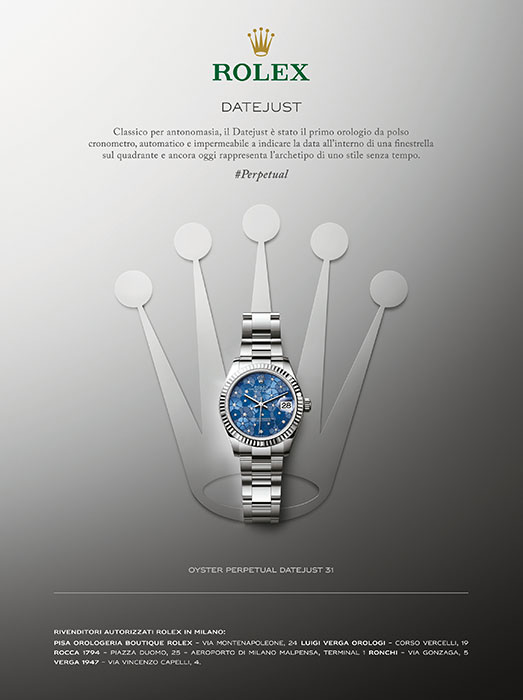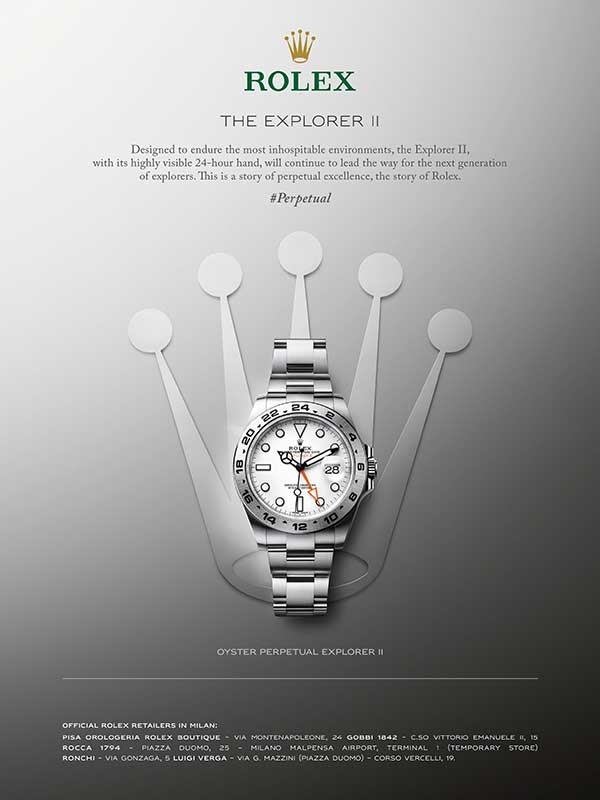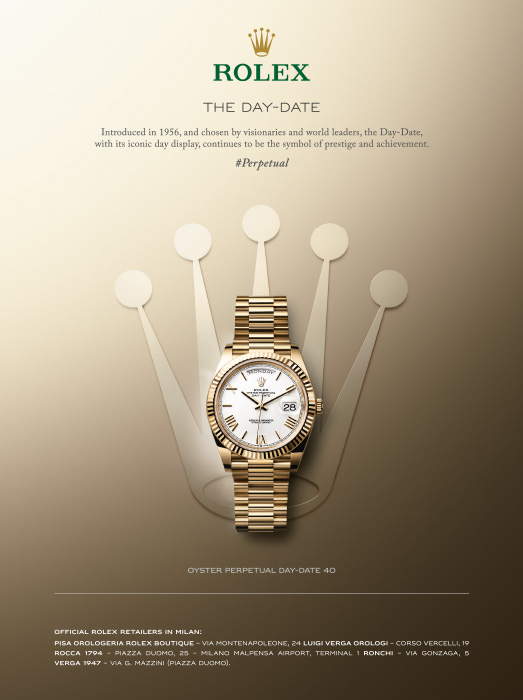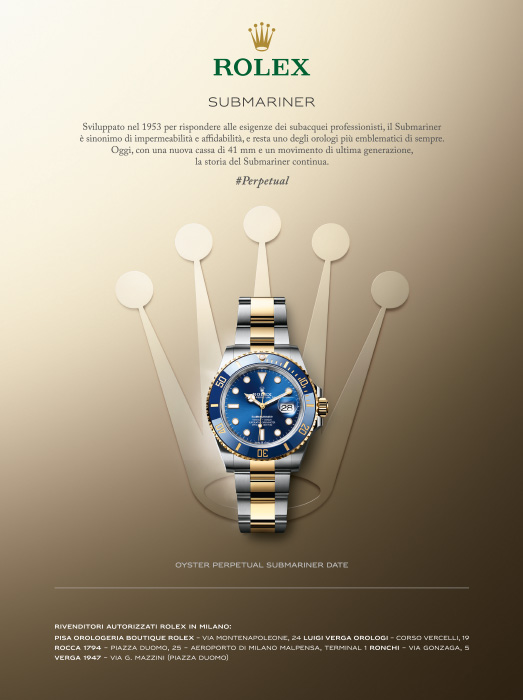Leonardo, Caravaggio… and Homer: welcome to ‘the most beautiful Museum in the world’
 In the ranking of must-see cultural attractions in Milan, the ‘Ambrosiana’ is rated at number 14. “Are you actually telling me that there are 13 other things to see before our museum”, says an incredulous Giorgio Ricchebuono, President of the Foundation that subsidizes the ’Ambrosiana. “You must be joking! This is the most beautiful museum in the world, not only in the city!” Put like this, his statement might seem excessive, naïve or simply biased: however, before concluding that that Mr. Ricchebuono is exaggerating, you should come to Milan and take a tour of the venue.
In the ranking of must-see cultural attractions in Milan, the ‘Ambrosiana’ is rated at number 14. “Are you actually telling me that there are 13 other things to see before our museum”, says an incredulous Giorgio Ricchebuono, President of the Foundation that subsidizes the ’Ambrosiana. “You must be joking! This is the most beautiful museum in the world, not only in the city!” Put like this, his statement might seem excessive, naïve or simply biased: however, before concluding that that Mr. Ricchebuono is exaggerating, you should come to Milan and take a tour of the venue.
To give you a better idea, the Ambrosiana is a Library containing one million (one million!) books, including manuscripts and prints; it’s an Art Gallery boasting masterpieces from all over the world; it’s ‘home’ to Leonardo da Vinci’s Codex Atlanticus and, what’s more, it’s connected to a monumental sacristy designed by Bramante.
Priceless works include Caravaggio’s famous Basket of Fruit; The Musician, one of Leonardo’s phantasmagoric portraits, a little less famous but no less intense than his Gioconda; the iconic Portrait of a Woman, also known as “the Duchess of Milan”, famed for the marvelous transparency of her pearls; Raphael’s ‘cartoon’, i.e. a life-size sketch (whose black and white rendition makes it particularly striking) for The School of Athens, offering viewers unique insight into one of the artist’s most famous works.
Here too you can admire several incunabola, examples of books printed during the earliest period of typography, ancient Christian and Jewish codices, a Koran thought to have been written at the time of the Prophet, Renaissance publications of Dante’s Divine Comedy, a copy of the La divina proportione by fra’ Luca Pacioli, still considered a key treatise for today’s designers and the so-called “Ilias Picta”, i.e. an illustrated version of the Iliad originating from none other than Alexandria in Egypt.
Not satisfied?
And that’s not all because, at the Ambrosiana, you can admire the entire Codex Atlanticus, the largest collection of drawings and manuscripts by Leonardo da Vinci, including a total of 1119 sheets, all housed in one building which, per se, is a work of art, featuring corners of rare beauty, stunning cloisters, original flooring, frescoed vaults, coffered ceilings and grand staircases adorned with statues from the Duomo. The general impression is that, as if by magic, like Alice in Wonderland, you have simultaneously stumbled upon your old high school art book, Harry Potter’s library and da Vinci’s Codex. Only that here, it all looks so much better!
A contemporary venue. Since the very beginning
When instituted, in 1607, the Biblioteca Ambrosiana, was an extraordinarily innovative place. It was originally founded by the pious Cardinal of Milan, Federico Borromeo, a nobleman and a patron of the arts. His love of books and his deep devotion to the people of Milan inspired him to create a library open to the public: a place of study, consultation and learning.
The collection was soon enriched by thousands of priceless texts: Christian texts (the erudite Francesco was, first and foremost, a man of religion) but also Hebrew codices and writings from the Arab world, Greek and Latin authors, classic and modern poets, illuminated manuscripts and examples of books printed during the earliest period of typography.
A little later, the art gallery, featuring paintings by Leonardo, Raphael and the Flemish School, was added to the library. At that time, the idea of collecting and preserving cultural assets with the aim of spreading information and thus contributing to ‘educating the people’ was an extremely advanced concept.
For this reason, in spite of the fact that the museum houses several of the most impressive traces of our past, we are of the firm conviction that the best way to honour its spirit is to perpetuate its modernity. An intelligent mission on which its curators are presently concentrating all of their efforts.
Thus, those entering the Ambrosiana will find themselves in a highly technological museum, offering the option of consultation via video touch screens and new generation guided tours.
For example, for 3 euros, you can rent smartphones (and, word has it that, in the future, tablets will also be available) which, thanks to a localization system, allows visitors to receive a wealth of information about the works being viewed. Additionally, based on a pioneering study, the paintings are illuminated by Led lighting designed to highlight them to a maximum with no risk of damage to the works themselves.

The way in which the Codex Atlanticus has been displayed over the past few years, i.e. as an exhibition ‘ in instalments, means that, on the one hand, visitors will have a better chance of studying it in-depth and, on the other, be encouraged to return, thus serving as an example of prudent management designed to further enhance its prestige.
In fact, the exhibition displays the various ‘chapters’ of the Codex (referred to as ‘Atlanticus’ because it consists of large sheets, having the same size as those found in an atlas) one by one. Leonardo’s machines, his sketches and his studies are obviously amazing: admiring them against the backdrop of the Biblioteca Ambrosiana, where the best of human knowledge is flaunted on floor-to-ceiling shelves, is a one-of-a-kind experience.
Among other things, it goes without saying that, over the past few years, thanks to a certain bestseller (need I say more?), the legend of Leonardo da Vinci has been infused with new life blood. However, the Foundation’s president, Giorgio Ricchebuono, prefers not to dwell on the subject of Dan Brown. “This venue houses so many marvels that we certainly didn’t need a book to advertise them. Yes, the writer did conduct research at the museum and you can find traces of his visit in his book but, I’d like to think that people are learning to love Leonardo and the Ambrosiana not only because of the work that we’re doing but also because people are finally beginning to spread the word.”
In fact, the Foundation’s tireless commitment to the project is beginning to pay off: established in 2008 on the initiative of the Administrator of the Ambrosiana, monsignor Franco Buzzi (its artistic curator and the cultural élan vital of the museum), the Foundation has involved people from the academic and corporate world, including professors Giorgio Ricchebuono and Claudio Devecchi. Its objectives: to preserve the library’s artistic and cultural heritage, to increase its use by the public, to serve as a means of exchanging ideas and artworks with other cultural realities and, last but not least, to raise funds.
Giorgio Ricchebuono (if you google him, you’ll find mention of his name in the New York Times and Businessweek) boasting a curriculum as a banker, was called in to deal with finances, driven as he himself says by “an authentic passion for beauty”.
[slideshow_deploy id=’31673′]
A vibrant place
As stated by the then president of the European Commission Manuel Barroso, “It is not solely a question of manuscripts or paintings, of codices or works of art, but rather the atmosphere as a whole. You can feel that this is a truly vibrant place!” Initially, like all other visitors, the president was attracted by the ‘Leonardo factor’: he was absolutely amazed. “I asked him to admit that this is the most beautiful and surprising museum in Europe – Ricchebuono says smiling – and he was unable to deny it.”
The Ambrosiana is also the headquarters of an Academy that, still today, and with unexpected vitality, deals with the ongoing pursuit of philological studies and the organization of literary cafés across the globe. It works in close collaboration with Milan’s universities and with countless cultural centres throughout the world. It regularly organizes ‘literary Thursdays’ , real international symposiums.
And, thanks to the intuition of its managers, over the last few years, it has become a setting for events and gala dinners in collaboration with the world of fashion and design.
The real heart of Milan
![]() The Ambrosiana nestles amidst the narrow, picturesque streets between the Duomo and piazza Cordusio. The area was finally closed to traffic a few years ago and you can now admire a sculpture by Daniel Libeskind dedicated to Leonardo. Thus, even contemporary art lovers now have their own attraction set, however, against an historical background.
The Ambrosiana nestles amidst the narrow, picturesque streets between the Duomo and piazza Cordusio. The area was finally closed to traffic a few years ago and you can now admire a sculpture by Daniel Libeskind dedicated to Leonardo. Thus, even contemporary art lovers now have their own attraction set, however, against an historical background.
For example, the place where the Ambrosiana stands is the exact point where the ‘Cardo’ and ‘Decumanus’ met. The focal points of the old Mediolanum, as the city of Milan was called by the Romans who conquered it in 222 B.C. As in all Latin cities, the ‘Cardo’ and ‘Decumanus’ were the two main north-south and east-west routes: in short, the Ambrosiana actually stands in the centre of the city.
To this we must add that ‘ambrosiana’ is synonymous with ‘Milanese’: the word comes from the name Ambrogio, bishop and patron saint of the city, who lived here in 300 A.D. and who had a profound influence on the history of Milan. Since that time, reference has been made to ‘the Ambrosian regional capital’, ‘Ambrosian tradition’ and so on.
For this reason, it is extremely sad to admit that, based on a survey conducted in 2013, as many as 45% of Milanese inhabitants (almost half of the city’s population!) know nothing or hardly anything about it. However, thankfully, things are changing rapidly and, hopefully, ‘Expo 2015’ will provide an additional opportunity to learn more about it. Among other things, several “ambassadors” of Expo have already included a visit to this museum among the ‘100 must-do things in Milan’.
So, take our advice and go and see it. But, not as the fourteenth thing on your list!
Elena Binda
Open Tues-Sun 9am-7pm.
The Atlantic Codex is on show in two different locations: Sala Federiciana (Pinacoteca Ambrosiana – 10am-6pm) and Bramante Sacristy (Santa Maria delle Grazie church – 8.30am-7pm).
Full ticket for the Pinacoteca Ambrosiana 15€, 10€ for the Bramante Sacristy, 20€ for a unique ticket.
Piazza Pio XI, 2
M1-M3 Duomo, M1 Cordusio
T:+39.02.806921
www.ambrosiana.it
www.leonardo-ambrosiana.it
[wpgmza id=”47″]






























